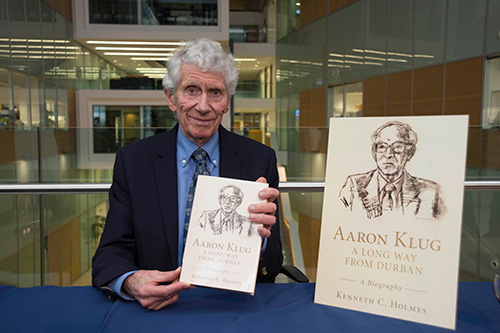Kenneth Holmes (1934 – 2021)
Ken Holmes, LMB alumnus and friend, has died at the age of 86. He was a PhD student with Rosalind Franklin at Birkbeck College, London, and moved to the LMB with Aaron Klug and John Finch in 1961.

He worked with Rosalind and Aaron on the structure of the tobacco mosaic virus (TMV) protein, making a vital contribution to the TMV project. He developed new methods of measuring, scaling and processing X-ray data and along with Bill Longley developed a fine focus rotating anode tube which significantly reduced the number of hours required for obtaining X-ray diffraction photographs. This led to the development of a new type of camera which was applied with great success to photographing live and contracting muscle. As a result of this, Ken began working with Hugh Huxley in studying the structure and function of muscle. Ken was the first to find the crucial evidence that myosin crossbridges in the thick filaments in muscle moved depending on the presence or absence of ATP.
Ken’s research continued when he moved to the Max Planck Institute for Medical Research in 1968, becoming Director of the Department of Biophysics in 1973. He solved the structures of a number of protein molecules, including the structure of actin and its filament, F-actin, and worked on the molecular mechanism of muscle contraction. In 1970, he pioneered the use of synchrotron radiation as a source for X-ray diffraction and founded the EMBL outstation at DESY Hamburg. He retired in 2003.
He was elected to EMBO membership in 1968 and to Fellowship of the Royal Society in 1981. He was also awarded the Royal Society Gabor Medal in 1997, the European Latsis Prize in 2000 and the Gregori Aminoff Prize of the Royal Swedish Academy of Sciences in 2001.
He remained in contact with many colleagues at the LMB, participating in events and inspiring conversations. In 2017, he published his biography of Aaron Klug – A Long Way from Durban – which was celebrated with a book launch at the LMB.